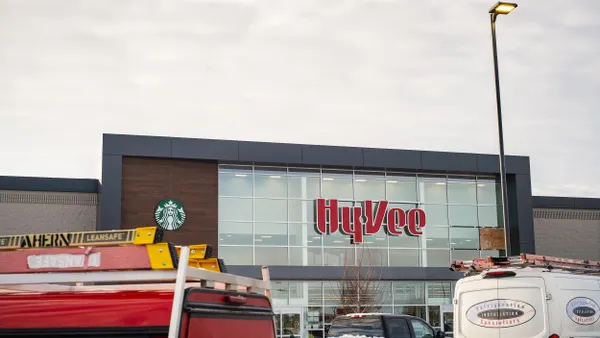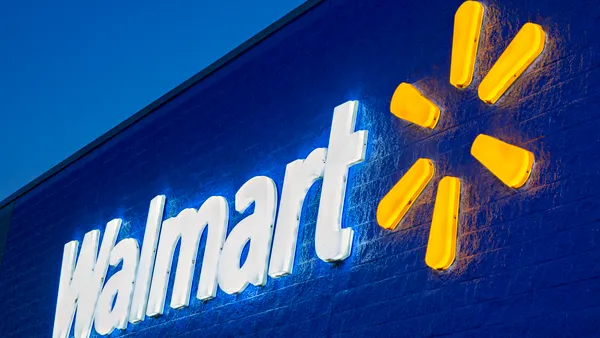Following in the footsteps of SNAP online purchasing, making digital aisles and online payment available to participants of the Special Supplemental Nutrition Program for Women, Infants and Children (WIC) is the new frontier for expanding online grocery access.
As with SNAP, allowing WIC participants to shop digital aisles could unlock millions of new shoppers online for grocers. WIC totaled 6.24 million participants in fiscal year 2021, according to USDA data.
And like SNAP, the WIC program faces a complex road toward full e-commerce implementation. Late last year, a USDA task force released a roadmap for modernizing WIC. The agency also teamed up with the Gretchen Swanson Center for Nutrition, a nonprofit research center, on a grant project to pilot WIC online ordering at select Walmart, Hy-Vee and Buche Foods stores. The project is slated to last through July 2023.
Meanwhile, New Mexico is blazing the trail for offline states, where WIC participants have to use their cards with point-of-sale (POS) systems at stores, with its own pickup pilot.
WIC agency leaders and advocates at the National WIC Association’s virtual conference held in mid-February said they are learning and adapting from the USDA's work on SNAP online purchasing, yet still face a long list of challenges and questions around meshing WIC with digital aisles and online payment processing. Panelists identified not only common pain points for grocery e-commerce but also broader equity issues, like broadband access and grocery availability for rural shoppers.
As the groundwork gets laid for nationwide expansion of WIC online ordering, grocers may want to start considering what it will take to be ready for when it comes down the pipeline. Here are key takeaways from the conference and what's ahead for WIC online ordering.
Ordering snafus and fulfillment woes
For tests already underway, commonplace e-commerce headaches like substitutions, inaccurate inventory and pricing, are already creating issues, particularly among small retailers with poor inventory management systems.
“We had a vendor that had over 50 different [varieties] of apples on the online web cart, when in fact, in-store they had only four,” Melissa Valdez, WIC vendor manager with the New Mexico Department of Health, said about challenges with the state's pilot.
The USDA's WIC task force is looking to address potential issues that could arise for WIC specifically. For example, the task force has proposed allowing pre-authorization, similar to a credit card hold at a gas pump, so WIC benefits are put on "hold" when the online order is placed but not deducted until it is fulfilled and completed to help ease hassles with post-order changes.
“This will hopefully make adjustments and refunds a little easier and was definitely a lesson learned from our SNAP colleagues,” said Melinda Newport, task force chair and Chickasaw Nation WIC's director of nutrition services.
The USDA task force recommends a grace period for benefit expiration that would give shoppers three days after they place an order to complete it. This would solve headaches around orders placed but not finalized just before benefits expire and give shoppers and stores flexibility with fulfillment. For grocers who have seen delivery or pickup windows fill up quickly, the grace period could help ease woes with having to rush fulfillment for WIC orders.
WIC benefits cannot be used for non-WIC items, making substitutions — already a common grocery e-commerce pain point — even trickier. Ideally, grocers would have real-time inventory management that locks in customers’ online orders, Celeste Lunceford, director of vendor management and operations at Texas WIC. Without that, some Texas retailers involved in the WIC pickup pilot are fulfilling orders within an hour of receiving them to minimize the risk out out-of-stocks, Lunceford said.
Training pickers to know which items are WIC-eligible can also make substitutions smoother, said Kim Boulette, vendor manager at Connecticut WIC.
Since WIC benefits cannot cover order fees, as with the SNAP program, there are concerns about financial barriers for customers and grocers being able to cover their e-commerce fulfillment costs. The USDA task force report suggests that retailers only charge one fee per order and make information about fees and order minimums transparent and available early in the shopping experience.
“Is it fair to even ask stores to not charge them to WIC customers because we want to treat them equitably?” Boulette asked.
Fixing barriers to access
Conference attendees repeatedly noted broadband connectivity, especially in rural areas, as a potentially big pain point, along with some consumers' unfamiliarity with online ordering and lack of access to computers. Texas, for example, is an offline state in large part due to its lack of internet access in some areas when Electronic Benefits Transfer (EBT) was implemented a few years ago, Lunceford said.
New Mexico and Washington have also run into broadband connectivity problems.
“Platforms for online ordering need to be optimized for mobile devices. But those devices will only work if the technology works. And what if people don't even have access to the hardware that they need to make this work? It's an equity issue," said Washington State WIC Director Paul Throne.
SNAP recipients face similar barriers, and some retailers have offered workarounds. Wright’s Market in Opelika, Alabama, set up stations with hotspots, devices and assistance for online grocery ordering.
Panelists also said services have to be in shoppers' languages. For example, New Mexico needed online ordering in English and Spanish because its pilot covers some predominantly Spanish-speaking communities, said Candice Trujillo, a regional manager with New Mexico WIC.
Newport said it’s important for customers to have their WIC balance available early in the shopping process. With SNAP online, some tech firms designed ordering platforms that allow customers to see their benefits balance.
Additionally, Newport noted the necessity of split tender — paying for an order with more than one payment method — and mixed baskets so shoppers can add WIC-eligible items alongside non-WIC ones.
On the fulfillment side, grocers may want to offer a wide range of services to draw in WIC participants, panelists said. In Texas, vendors offer drive-thru pickup, in-store pickup and curbside and will soon offer the ability to order carside ordering, Lunceford said.
Last spring, a multi-state survey of more than 26,000 WIC participants found nearly three-quarters picked self-checkout as their preferred shopping option, followed by pickup (65.2%) Only 35.4% chose “home delivery for an additional out-of-pocket fee."
Self-checkout and pickup are highly desired
Moving forward amid unknowns
WIC, like SNAP, has a complex chain of command. Funded by Congress, WIC is overseen by the USDA at the federal level and by more than 80 agencies at the state level. The program operates through 1,900 local agencies across the U.S. and its five territories.
In the case of SNAP online, grocers and technology partners said government red tape played a role in the delays and large workloads associated with rolling out online payments. WIC agencies and the USDA task force want to avoid that with WIC by streamlining the process and cutting out duplicative efforts, where possible.
Several panelists from WIC state agencies expressed a need for more collaboration across state lines as one way to address that. The task force report proposes "national authorization" so states could opt-in to streamline multi-state authorization for virtual vendor platforms. While that would benefit larger vendors, the task force also sees a need for plug-and-play solutions for smaller retailers, Newport said.
WIC agency leaders said they want to help a diverse set of retailers offer WIC ordering online, particularly after Walmart and Amazon dominated the initial rollout of SNAP. New Mexico is focused on independents, partly to help them overcome a lack of resources with digital aisles and modify their POS systems and partly due to larger retailers declining to join the state's pilot, Trujillo said.
While Trujillo said independents are "a critical lifeline in rural and remote communities," panelists noted larger players often have more resources and scalability.
Online ordering is also complicated by the limitations of WIC rules and regulations that panelists described as outdated. In Georgia, for example, each grocery store has its own WIC authorization. Sean Mack, WIC director at the Georgia Department of Public Health, wondered how online ordering could work for a grocer with an online ordering site that connects to several distribution centers or has stores or facilities across state lines.
Other unknowns expressed by panelists included funding, compliance monitoring for dark stores and minimum stock requirements varying across states. With nutrition as a key tenet of WIC, some wondered how grocers can incentivize healthy food purchases online.
As part of the Gretchen Swanson Center pilot, Washington will figure out the time and financing that's required to stand up WIC online purchasing, Throne said. The USDA task force recommended Congress authorize $75 million for WIC state agencies for WIC online shopping by Oct. 1, 2025.
Even with the challenges and unknowns, WIC online purchasing is progressing. Most of the states in the Gretchen Swanson Center pilot are expected to go live with online WIC shopping in the fall, Throne said.
“I'm especially excited about this project because this is going to set the stage for the possibility of nationwide online [WIC] ordering. … The point of this pilot is to prove the concept works, to find out how much it takes to make it happen, to identify challenges we might not be seeing at the front end so that everyone else can be aware of those and to roll it out," he said.












